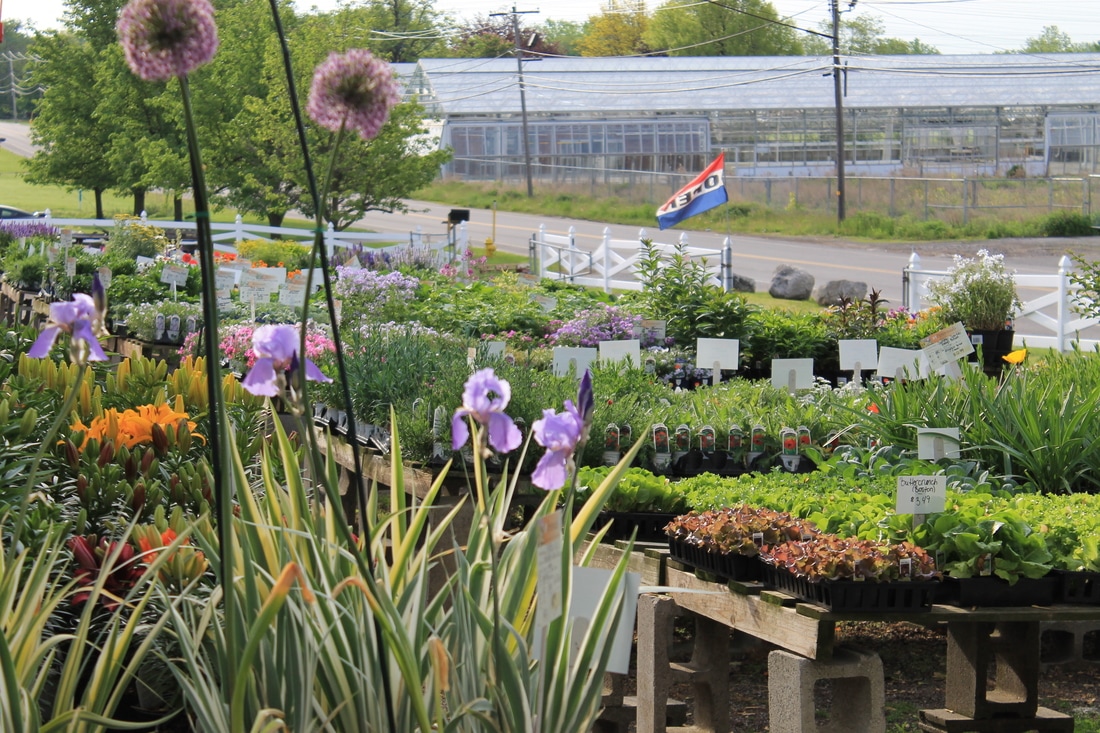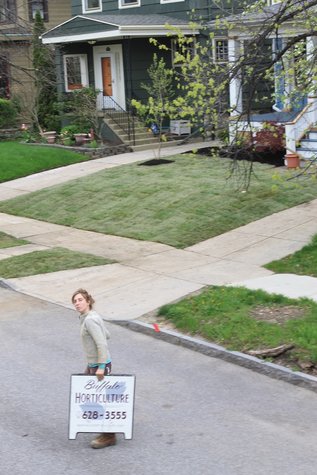|
6/28/2017 Reviewing May in Images May. Its when the Crabapples bloom. While there are 100s of cultivars of Crabapple out there, most of the Crab's we see in the neighborhood are predominantly only of four to five cultivars that have been planted by City of Buffalo Forestry and neighborhood volunteers. A solid performer, but sometimes the crown needs to be raised so to make room for the sidewalk, which I've done here.  By the end of May we've all probably been out to get annuals at the greenhouse. Here is my favorite, Weber's out in West Seneca. More importantly is how this overlooks an empty greenhouse from the old Majewski Nursery, once one of the biggest around, now evidence of an every changing structure in the horticultural business and industry.  A before image of a sizable project we worked in the 14213. I see this as a look into what a "Buffalo Garden" is and also evidence of how many people are moving into the neighborhood as we are constantly taking yards that haven't been cared for in years (a generation or two) and making them into clean useable spaces.  'Flame' Willow - We have been using this plant since the middle of last decade, back when Emily was working with me. She introduced it to me. You will find a close friend to this plant 'Scarlet Curls' Willow at "The Mansion on Delaware" from when we landscaped that together in +/- 2005. Here, I've harvested some from my backyard. Perhaps this is the precursor to arrangements Ferncroft and I will put together for a wedding this weekend at the Hotel Henri that feature long 5-6' branches of this Willow.  Spiraea x VanHouteii. I have a story to tell of this plant going back a shade over ten years now and how its influence changed the path of Buffalo Horticulture's thinking to what we are today. Here, this Spiraea, is at "The Territory," a collaborative art space and garden on Bidwell Parkway in the 14222. 6/26/2017 Landscape and Garden as LanguageMeeting with a client over the weekend, speaking of a bare soil area under the shade of some Pine trees, I suggested we just put mulch instead of trying to grow grass that will never grow. Recognizing at the same time this mulched area would, if the client chose for a more manicured look, cause more work in managing spontaneous naturally occuring vegetation, I pointed out that we are only mulching as a sign, to signify, like a word, only in landscape not text, that there is human intention, intelligence, and care given to this space.
From and image I can never make a one-to-one copy of a floral arrangement or garden. It can never be the original; at best the artist can attempt a simulation of the original. Even to discuss this "simulation," we would have to pull apart and recognize how we understand what "the original" is. As a designer, I might say the original has a sense, "a gesture," a poetic, a fantasy, a statement, or a signification in the language of the field. Secondly, the original has its form, its tactility, its visual quality. I may speak of this as texture, proportion, intensity, balance, repetition, unity, form, shape, etc. The struggle always confronted - creating anxiety, depression, and separation - is in the translation from the artists body, where and how the artist knows the original, into language that the consumer uses. We'll call this "The Discourse of Flowers" (following Roland Barthes), a language seperate from the body and sensibility. As when the artist Opens her mouth to utter "We aren't using Peonies or Ranunculus" - and everything you so much love and know, Only simulations of them, "Translations" So-to-speak Translations to best approximate the original you've shown us. At this point Meltdowns begin. A client, finishing up our initial consultation last night, said to me fearfully, "But, you know we are talking with other people? We are getting other prices." Which since then has set me off in wonder as to what other professionals do in their "consultations." I'm left asking, "Am I doing this wrong?" 1. "Architect/Design&Build." On the one hand, I see myself affiliated with Landscape Architecture, only "Design/Build" is a different process to arrive at an end. I am paid to build something that begins in the imagination as a dialogue between the client and myself. I am paid for an end product and it is my work to deliver it from imagination to concrete object. This may be different from a pure architect's process as they generally work in the imagination, communication, and theoretical phases and then collaborate with skilled labor to build the project. At the end of the day, the end value of the project is the same only the value has been created and paid out in different ways. 2. "The Process." I think where I get concerned is that my client was surprised and didn't understand why I would spend an hour consulting with them. I explained it may take a week for me to get back with them with more thoughts, ideas, and rough budget numbers which would allow me to have a conversation to then imagine what we may together decide to be the final scope of work. Design - or the creation of a work scope - is a back and forth process. It takes time. I provide consult, ideas, possibility, budget guidance, all to create a scope of work that we then agree to a price or value of. The value of my consult and design is embodied in the value of the project as opposed to separated between architect and skilled labor. 3. "The Lawn Guy." A contractor is an organizer of production, machinery, and skilled labor. This is who would work with an architect (Note: I am surely capable to move into the role of "contractor" and collaborate on projects with an architect. My concentration here is on the client's process to receive consult). If you know exactly what you want, find a contractor. If you don't know EXACTLY what you want, you need (might choose to find) consult. And so, with my client, there was "The Lawn Guy," who they suggested had a different point of view than I - he said "to just make everything lawn" - which may not be wrong but a contractor is just selling work. He didn't spend an hour and won't do four hours work to prepare for the next conversation. A designer or architect is collaborating with a client to represent your interests and wants, not to move units. This isn't to say contractor's don't have value. I am just demonstrating a conceptual spectrum of consultation ranging from pure consult to its opposite extreme - sales. 4. Anyway...I've a lot to say about this but can't yammer on forever. I hope this becomes part one of a larger conversation. It is targeting this place I am often speaking of with others - "where is the value of the designer, be it floral, landscape, graphic, etc, located and how do we receive compensation for our life expended?" |
Matthew DoreLandscape designer and Proprietor of Buffalo Horticulture Archives
April 2020
Categories |
Telephone(716)628.3555
|
|











 RSS Feed
RSS Feed